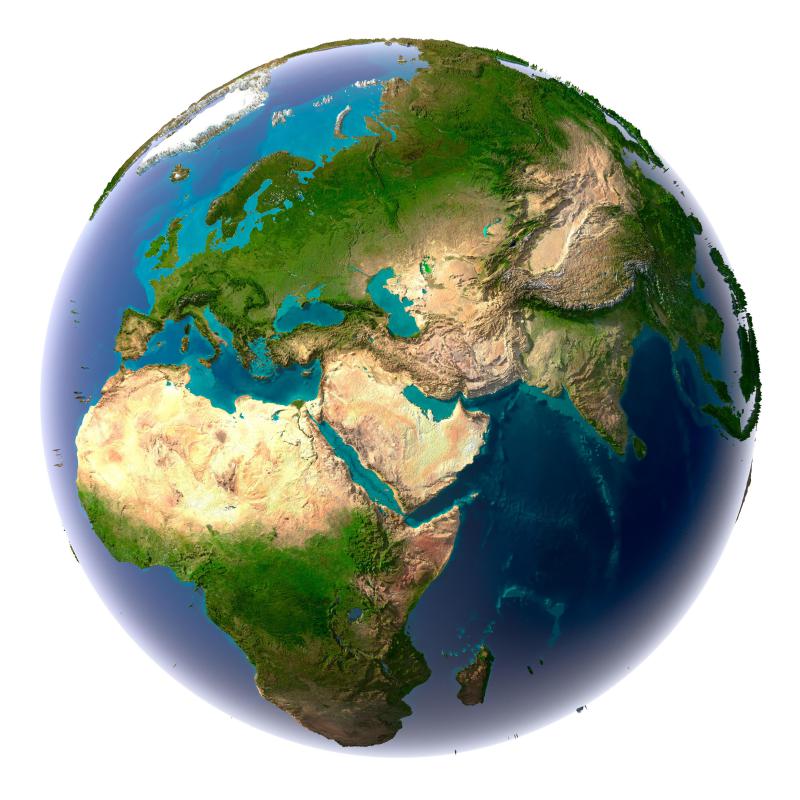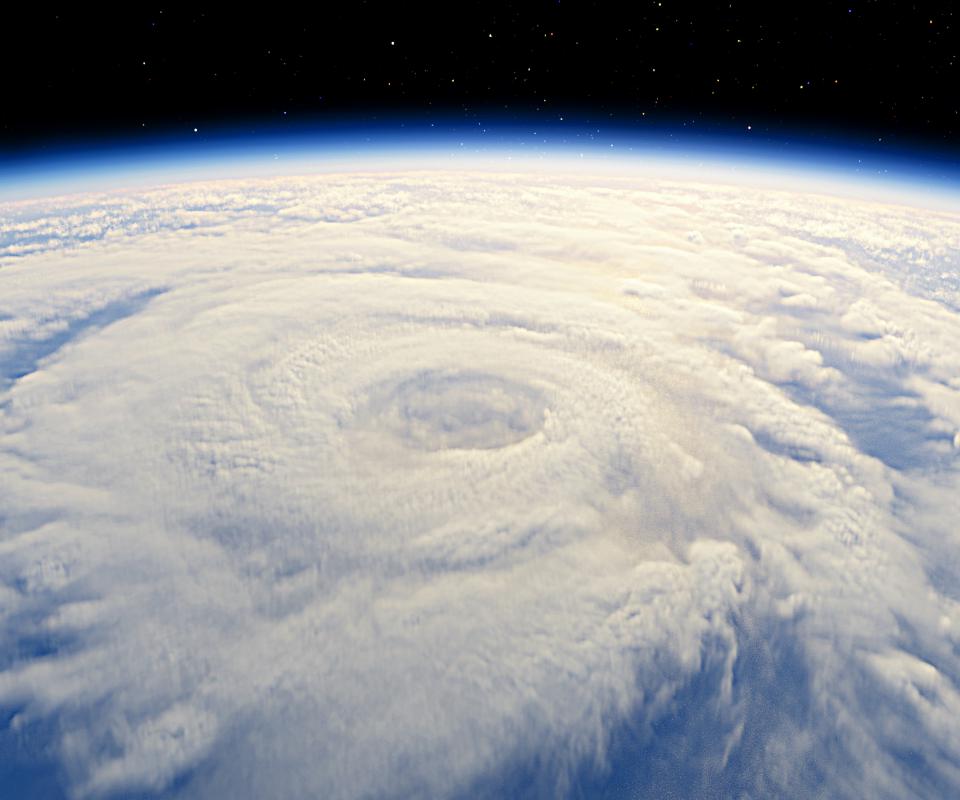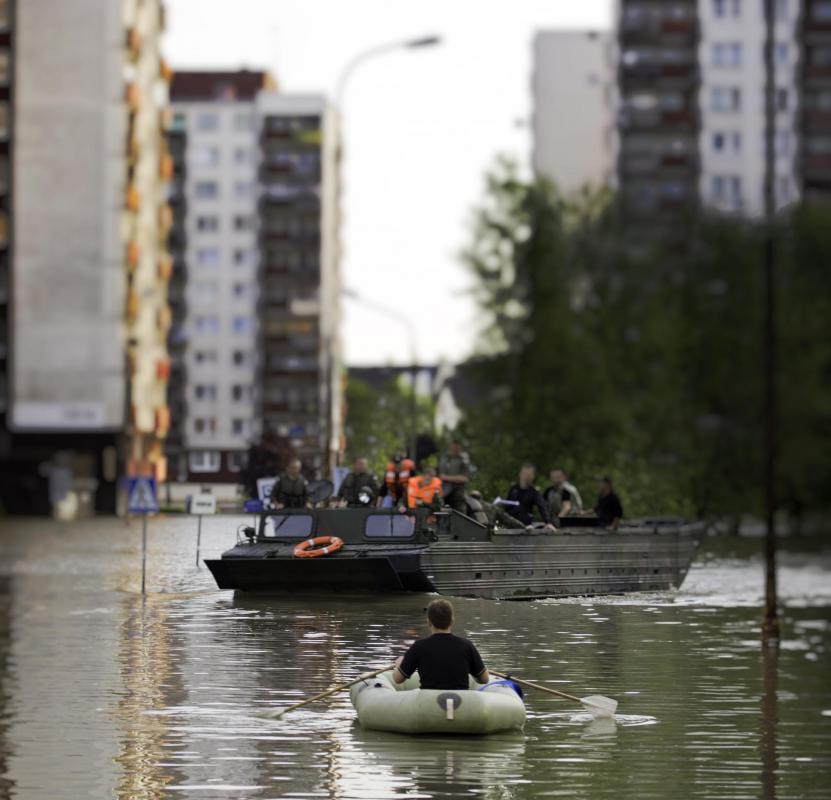At AllThingsNature, we're committed to delivering accurate, trustworthy information. Our expert-authored content is rigorously fact-checked and sourced from credible authorities. Discover how we uphold the highest standards in providing you with reliable knowledge.
What is the Difference Between a Typhoon and a Cyclone?
Strangely, there is no quantitative difference in strength, speed, or damage caused by a cyclone versus a typhoon. The only difference between these two names for cyclical tropical storms are the global area in which they form. People around the Indian Ocean and Southwestern Pacific Ocean (that part of the Pacific Ocean near Australia) refer to these storms as cyclones and those storms that generate in the Northwestern Pacific Ocean (that part of the Pacific Ocean near Asia) are called typhoons. Incidentally, people around the Atlantic Ocean and Eastern Pacific Ocean (that part of the Pacific Ocean near the Americas) call such powerful, cylindrical storms hurricanes.
A low-pressure system that develops over the ocean during the right conditions might create thunderstorms and high winds that qualify it as a tropical depression. This storm could keep gaining energy from warm ocean waters and advance to a tropical storm if it has winds of 39-73 mph (62-117 km/hr). Once the rotating, centrifugal force exceeds these wind speeds, meteorologists classify it as a more severe tropical storm whose name varies based on its location.

If a severe storm churns somewhere in parts of the Northwestern Pacific Ocean (which is in the Eastern Hemisphere), we call it a typhoon. However, if this same exact storm were hypothetically dropped into the Indian Ocean or the middle of the Southwestern Pacific Ocean (which is still in the Eastern Hemisphere), we'd refer to it as a cyclone. Among cyclones, there are different names based on their locations. Severe cyclonic storm, severe tropical cyclone, and tropical cyclone are all variations of the same type of storm.

Even though some international meteorologists have universalized a cyclone to mean any circular wind system, for the most part its geographic specificity endures. One way to get a grasp on this distinction is by starting off with a flat representation of the world in its most common form (i.e., with the Americas on the far left and Australia on the far right). The left half of the map uses the term hurricane, the top half of the right side of the map uses the term typhoon and the bottom half of the right side of the map uses the term cyclone.

Another, more precise way to look at it is by considering meridians and other longitudinal lines. Storms in the Northwestern Pacific Ocean, west of the International Dateline or IDL (that cuts roughly between the Americas and Asia, located at 180° longitude) are called typhoons. Storms in the Indian Ocean or in the Southwest Pacific Ocean west of 160°E longitude (160°E longitude is just a little west of the IDL) are called cyclones.
In the northern hemisphere, storms turn counterclockwise, while in the southern hemisphere they rotate clockwise. One difference between a certain cyclone and typhoon might be their rotational direction. Most serious storms are created near the equator because of the ocean's temperature and currents, but sometimes they'll stray further away. Damage from these storms usually results when they drift over populated coastal land. They are separate phenomena from a monsoon, tornado, or tidal wave.
Frequently Asked Questions
What is the basic difference between a typhoon and a cyclone?
A typhoon and a cyclone are essentially the same weather phenomenon known as a tropical cyclone. The primary difference lies in their location. Typhoons occur in the Northwest Pacific Ocean, typically to the east of the dateline. Cyclones, on the other hand, are found in the South Pacific and Indian Ocean. Both bring strong winds, heavy rain, and can cause significant damage.
Are typhoons and cyclones measured differently in terms of intensity?
The intensity of typhoons and cyclones is measured using the same meteorological scales, such as the Saffir-Simpson Hurricane Wind Scale. This scale categorizes storms from Category 1 to 5 based on sustained wind speeds. Regardless of where they occur, the categorization criteria remain consistent, allowing for a standardized assessment of storm intensity worldwide.
Why are there different names for the same weather event?
Different names for tropical cyclones have developed due to regional variations in language and culture. These names help local populations better relate to and understand the storms. For instance, 'hurricane' is used in the Atlantic and Northeast Pacific, 'typhoon' in the Northwest Pacific, and 'cyclone' in the South Pacific and Indian Ocean, reflecting the nomenclature familiar to those regions.
How do typhoons and cyclones form?
Typhoons and cyclones form over warm ocean waters when the sea surface temperature is above approximately 26.5 degrees Celsius (79.7 degrees Fahrenheit). This warmth, combined with atmospheric conditions like low wind shear and high humidity in the mid-troposphere, allows thunderstorms to coalesce into a larger and more organized system, eventually intensifying into a tropical cyclone.
Can typhoons and cyclones affect each other's development or behavior?
While typhoons and cyclones are region-specific, they can indirectly affect each other through a phenomenon known as the Fujiwhara effect. When two cyclones pass close to each other, they can start to orbit and potentially merge or alter each other's paths. However, this interaction is relatively rare and typically occurs within the same ocean basin.
What are the impacts of typhoons and cyclones on the environment and communities?
Typhoons and cyclones can have devastating impacts on the environment and human communities. They can cause widespread flooding, landslides, and wind damage, leading to loss of life and destruction of property. According to the National Oceanic and Atmospheric Administration, the economic cost of these storms can run into billions of dollars, with long-term effects on the affected regions' economies and ecosystems.
AS FEATURED ON:
AS FEATURED ON:













Discussion Comments
This is best answer to this question that I've gotten.
This article is a nice one and explains the difference between a typhoon and cyclone very minutely. Thanks.
It is interesting how longitude and latitude play such an important role in cyclical tropical storms. Ever since my dad mentioned his destroyer went through a typhoon during World War II, I have always wondered what the difference was. Thank you wiseGEEK. Great web site.
thanks for this information. i was so confused about the difference between a typhoon and cyclone, but now i am able to understand. Thanks a lot!
Science is great! Scientists are greater! WiseGEEK is the greatest!
natynm
thank you very much for the very good information. I like it a lot. I'll tell my friends to read here too. Thanks again!
This was the BEST site I could find (after 10 minutes of searching) to very simply and clearly answer my very simple question. Thank you!
I suggest, as a long term science/geography/ English teacher, that you either show a world map or better still a map with the zones marked together with the chart from the Australian Bureau of meteorology where they deal with the same question.
Thank you for the information. When I sailed the East China Sea, we knew what a typhoon was. Now I know what a cyclone is... (but It's better when experienced.) Awesome forces of nature, for sure!
are there any chances of knowing about the interal part of the tornadoes
Post your comments